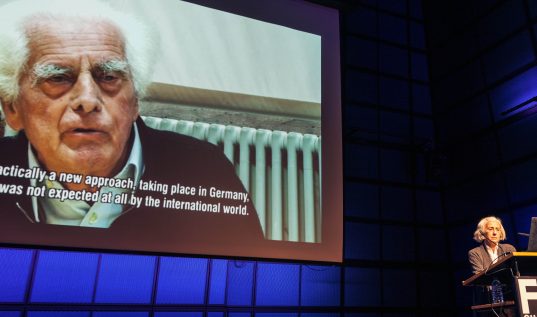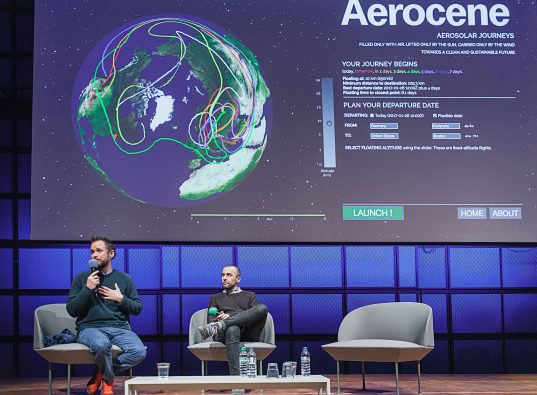Symposium - Architecture as a presumed future
With Nathalie Bredella (UdK Berlin), Cornelia Escher (University of Konstanz), Daniela Fabricius (Princeton University), Irene Meissner (TU Munich), Achim Menges (University of Stuttgart), Christine Kanstinger (Atelier Frei Otto), Joachim Kleinmanns (saai/KIT), Jan Knippers (University of Stuttgart), Toni Kotnik (Aalto University Helsinki), Martin Kunz (saai/KIT), Georg Vrachliotis (saai/KIT), Peter Weibel (ZKM).
Keynote Lecture:
Tomas Saraceno (Berlin)

"People say that machines, the tools of development, kill the imagination. However, this is not due to the machines, but to man himself, who builds machines that are neither adaptable nor rational: Machines that lack imagination." So wrote the young German architect Frei Otto in his concise, manifesto-like essay "Imagination et architecture - essai d'une vision d'avenir", which was published in the French magazine "L'Architecture d'Aujourd'hui" in 1962. Otto illustrated his essay not with photos of realized projects, but with watercolour drawings and ink sketches showing fascinating membrane roofs and tent-like structures stretching over residential complexes, landscapes or even entire self-contained cities. By juxtaposing factors seemingly worlds apart - the unbridled imagination; constructive or mechanical potential - Otto put his finger on what would prove to be the central principle of his architectural practice: the persistent quest to find an effective and fruitful balance between creative vision on the one hand and the rationality of technological constraints on the other.
Architecture is experiencing a revival of the importance attached to the study of materials and components and the associated craft skills and knowledge. This consideration of the physical and craft aspects has also placed a renewed focus on the history of models and their experimental function in architecture, art and science. The question of the materialization of information is of great importance in this context.
The relevance of Frei Otto's empirical model aesthetics lies in recognizing the enormous potential of object knowledge and its material-cultural dimension - on the one hand, to continue anchoring the perception of the resource between nature, technology and society, and on the other, to enable a better investigation of the complex interrelations between digital and analogue. So what does it mean for architects and engineers to design in a society that is seeking a balance between increasing digitalization and an ever more important awareness of resources? For contemporary architecture, the richness and abundance of Frei Otto's cosmos represents nothing less than an intellectual thought collective for a different and optimistic narrative of the future environment and human coexistence.
The symposium "Architecture as a Conjectured Future" takes place in the context of the exhibition "Frei Otto. Thinking in Models" at the ZKM | Karlsruhe in cooperation with the Department of Architectural Theory at the Institute of Design, Art and Theory of the Karlsruhe Institute of Technology (KIT).
Information and program: ZKM Symposium
Karlsruhe, 26/27.1.2017




